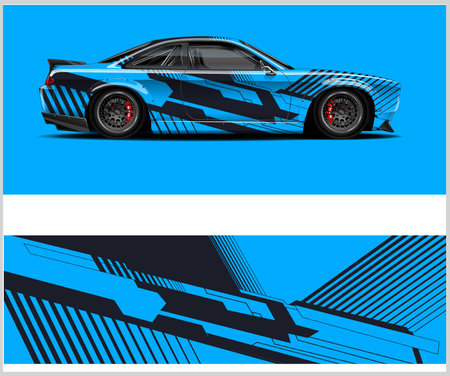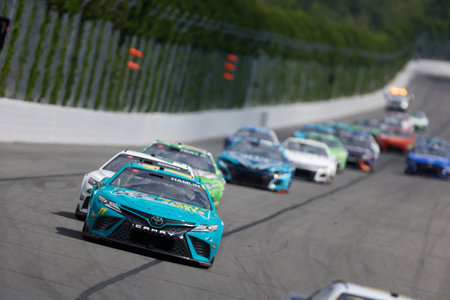1. Introduction to Car Club Competitions
Car clubs are more than just groups of people who love cars—they are communities built around speed, style, and performance. These enthusiasts come together for friendly but intense competitions that test their vehicles and driving skills. From straight-line drag races to judged showdowns and circuit track days, car clubs offer a variety of events that appeal to different kinds of drivers.
Why Car Clubs Compete
Car club competitions are about more than just winning. They bring enthusiasts together to share their passion, showcase their builds, and challenge each other. Whether its modifying for speed, aesthetics, or handling, these events provide a stage for car lovers to prove their dedication. The competitions also foster a sense of camaraderie, as members learn from each other and bond over shared experiences.
Types of Car Club Competitions
Car clubs participate in a range of events, each with its own rules and excitement. Below is a breakdown of the most common types of competitions:
| Competition Type | Description |
|---|---|
| Drag Races | A straight-line race focusing on acceleration and speed over a short distance, usually a quarter-mile. |
| Showdowns | Car shows where vehicles are judged based on aesthetics, modifications, and overall presentation. |
| Track Days | Time-based racing on a circuit track, where drivers test their handling and performance skills. |
The Culture Behind the Events
Car club competitions are deeply rooted in car culture. Many participants spend years modifying their vehicles, tuning them for optimal performance, or designing unique looks. The events serve as a gathering for car enthusiasts to celebrate automotive craftsmanship, innovation, and skill. Social media and online forums also play a big role, allowing participants to share their experiences, results, and modifications with a wider audience.
What Drives Enthusiasts to Participate
For many, joining these competitions is about more than just cars—it’s about the thrill, the people, and the passion. Some aim to set personal records on the track, while others enjoy the attention their show cars receive. The social aspect is also a major draw, as friendships are forged through shared interests and competitive spirit.
2. Drag Races: Head-to-Head Speed Battles
Drag racing is one of the most intense and thrilling competitions among car clubs. It’s a battle of speed, acceleration, and driver skill—all packed into just a few seconds of pure adrenaline. Whether on a sanctioned track or a private competition, drag races test the performance of cars and the reflexes of their drivers.
The Rush of Drag Racing
Nothing compares to the excitement of two cars lining up side by side, waiting for the green light. As soon as the race starts, its all about reaction time, traction, and straight-line speed. Even a fraction of a second can determine the winner, making drag racing both exhilarating and demanding.
Basic Rules of Drag Racing
Whether racing on an official drag strip or an informal event, there are fundamental rules every competitor must follow:
- The Start: Races begin with a “Christmas Tree” light system. A perfect start depends on reaction time.
- The Distance: Most drag races are either 1/4 mile (1320 feet) or 1/8 mile (660 feet).
- False Starts: If a driver moves too early, they get a “red light” and automatically lose.
- Winner Determination: The car that crosses the finish line first wins, regardless of if it has a higher top speed.
Car Modifications for Drag Racing
To gain an edge in drag racing, competitors invest in various car modifications. Here’s a breakdown of common upgrades and how they help:
| Modification | Purpose |
|---|---|
| Turbochargers/Superchargers | Increase engine power by forcing more air into the combustion chamber. |
| High-Performance Tires | Improve traction and minimize wheel spin at launch. |
| Weight Reduction | Removing unnecessary parts and using lightweight materials for better acceleration. |
| Transmission Upgrades | Allow faster shifts and more efficient power delivery to wheels. |
| Nitrous Oxide (NOS) | Provides a temporary power boost for an extra speed surge. |
What It Takes to Win
Winning a drag race isn’t just about raw horsepower. It involves precision and technique:
- Reaction Time: Quick reflexes at the starting line can make all the difference.
- Launch Control: Managing wheel spin and traction for an explosive start.
- Shifting Technique: Well-timed gear shifts to maintain maximum power delivery.
- Car Setup: Fine-tuning suspension and weight balance for optimal performance.
Final Thoughts on Drag Racing
Drag racing is one of the most competitive and exhilarating ways for car clubs to prove their speed dominance. A combination of technical knowledge, driving skill, and car modifications makes the difference between victory and defeat.

3. Showdowns: Showcasing Style and Performance
Car clubs often compete in showdowns, where vehicles are judged based on their design, modifications, and overall presentation. Unlike drag races or track days, these events focus on aesthetics, craftsmanship, and unique style rather than speed. Showdowns offer car enthusiasts a way to display their hard work and gain recognition for the artistry behind their builds.
How Car Clubs Compete in Show-Style Events
In showdowns, car clubs compete by entering their best vehicles into different categories. Events are typically held at car shows, park gatherings, or special automotive expos. Car owners spend hours—sometimes even years—modifying their vehicles to stand out. Whether its classic restoration, high-end supercars, or custom builds, the goal is to create a masterpiece that impresses judges and spectators.
Common Competition Categories
| Category | Description |
|---|---|
| Best in Show | Overall top vehicle based on appearance and modifications |
| Best Paint | Awarded for outstanding paint quality and design |
| Engine Bay | Recognizes the cleanest and most impressive engine setup |
| Interior Styling | Rated on quality and uniqueness of the vehicle’s interior |
| Best Stance | Given for the most aggressive or well-executed vehicle stance |
Judging Criteria for Showdown Events
Judging in showdowns is often subjective, but there are specific aspects that judges focus on. Factors like paint quality, bodywork, vehicle stance, customization, and uniqueness play a significant role in determining winners. Cleanliness and attention to detail are also crucial, as even the smallest imperfections can cost points in a tight competition.
Key Judging Factors
- Paint & Bodywork: Smooth, well-executed paint and flawless body modifications.
- Creativity & Customization: Unique personal touches and one-of-a-kind design elements.
- Interior Details: The use of high-quality materials, upholstery design, and overall cleanliness.
- Engine Bay Presentation: The level of detail, wire management, and engine modifications.
- Wheels & Stance: Proper fitment, alignment, and aftermarket modifications like air suspension.
The Importance of Aesthetics and Performance
While design and aesthetics take center stage in showdowns, performance is not entirely overlooked. Some competitions include “drive-in” requirements, where vehicles must prove they are functional and roadworthy. Having a well-balanced combination of beauty and real-world performance increases a car’s chances of winning.
Balancing Looks and Performance
Many enthusiasts aim to create builds that excel in both form and function. A visually stunning car that can also deliver outstanding power and handling earns extra respect in the car community. Clubs that invest in both styling and performance modifications tend to dominate showdowns, showing off their vehicles in every possible way.
4. Track Days: Pushing Performance to the Limit
What Are Track Days?
Track days give car enthusiasts a chance to push their vehicles to the limit in a controlled environment. Unlike drag races or showdowns, these events focus on handling, braking, and overall driving skills. Clubs often book race circuits, allowing members to test their cars without worrying about traffic or speed limits.
Developing Driving Skills
Track days are an excellent way to improve driving techniques. Drivers practice cornering, braking points, and throttle control while receiving guidance from experienced racers or coaches. The goal is not just speed but also precision and control. Many car clubs organize group training sessions to help members refine their skills.
Tuning for the Circuit
Unlike street driving, track days put significant stress on cars. Owners often make modifications to enhance performance and reliability. Here’s a breakdown of common upgrades:
| Category | Recommended Modifications |
|---|---|
| Tires | High-performance or semi-slick tires for better grip |
| Brakes | Upgraded brake pads and high-temperature brake fluid |
| Suspension | Coilovers or performance shocks for better cornering |
| Cooling | Oil coolers and upgraded radiators to prevent overheating |
| Safety | Racing harnesses, roll bars, and fire extinguishers |
The Thrill of Pushing Limits
One of the biggest draws of track days is the excitement of driving at high speeds without restrictions. Drivers can experience the full potential of their cars, testing acceleration, aerodynamics, and handling on every lap. Each session provides valuable feedback, helping them fine-tune both their driving and vehicle setups.
The Social Aspect
Aside from competition, track days are also great for networking. Club members exchange tips, discuss car modifications, and sometimes even swap vehicles for a few laps. The camaraderie and shared passion create a close-knit community of performance driving enthusiasts.
5. Five: The Competitive Spirit and Club Rivalries
Competition has always been a driving force in car culture, and for car clubs, it goes beyond simply winning races. The thrill of competition strengthens club communities, fosters deep friendships, and fuels a passion for automotive excellence. Whether it’s drag racing, car showdowns, or track days, rivalries play a huge role in pushing enthusiasts to improve their builds and driving skills.
How Rivalries Strengthen Car Communities
Car club rivalries may seem intense, but they often bring members closer together. Healthy competition encourages teamwork, knowledge-sharing, and personal improvement. Instead of just building cars for fun, clubs take pride in creating high-performance machines, knowing they’ll go head-to-head with their rivals. These rivalries also help expand the car scene by creating exciting events that attract spectators and new members.
Key Benefits of Club Rivalries
| Benefit | How It Helps |
|---|---|
| Encourages innovation | Clubs push members to improve engine performance, aerodynamics, and tuning. |
| Builds stronger friendships | Even fierce competitors respect each other and bond over their shared passion. |
| Increases event participation | Club showdowns and races attract more people, growing the car community. |
| Motivates skill development | Drivers refine their techniques to gain an edge in competitions. |
The Camaraderie Behind the Competition
Despite the fierce rivalries, car club members often look out for each other. A breakdown during a track day? You’ll likely see rival clubs jump in to help. Running into an issue with tuning? Fellow car enthusiasts – even from competing clubs – often share advice. This sense of camaraderie stems from a mutual love for cars, and while competition adds excitement, respect remains at the core.
When Rivals Become Friends
Some of the best friendships in car culture begin with competition. Over time, rival clubs recognize each other’s dedication and craftsmanship. Many enthusiasts start by racing against each other and end up building cars together, exchanging parts, or even forming new clubs.
Final Thoughts on Rivalries
Rivalries may spark competitiveness, but at their core, they fuel the car scene with excitement and growth. Whether it’s a late-night street battle, a polished car showdown, or a high-speed track event, the competition between car clubs creates lasting memories and pushes enthusiasts toward their best. The love for cars will always unite the community, proving that behind every rivalry is a shared passion for the road.


